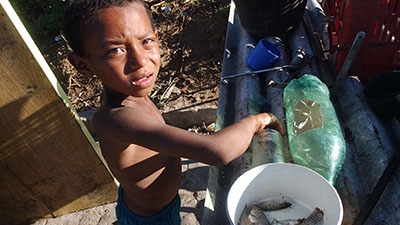Challenge
Between 1985 and 2006, growth in Alagoas averaged only 1.8 percent, the lowest in Brazil’s Northeast region. Average economic growth in both the Northeast region and for Brazil as a whole reached 2.6 percent. The state has also experienced one of the most difficult fiscal situations in Brazil. Excessive personnel expenditures resulted in continuous fiscal deficits and high indebtedness. This, in turn, has hampered the state government’s ability to invest, and constrained the state’s capacity to provide adequate economic infrastructure and public service delivery.
These fiscal constraints caused a downward spiral, whereby weak state capacity led to a reduction in the quality of public services, lower economic growth and revenues, and a more precarious fiscal equation.
Solution
The financial support provided by the Bank loan gave immediate relief to the state’s financial situation. In addition, the Bank’s technical support allowed the state government to tackle the underlying issues that were generating poor fiscal outcomes. For instance, during project preparation, the Bank hired budget experts to assess practices and draft an action plan to improve the process. The implementation of the plan then became a tranche release condition in the loan and progress was tracked using Public Expenditure and Financial Accountability indicators.
A grant from the Bank’s Institutional Development Fund helped the state government reduce the number of days to conduct the procurement process. The state government also benefited from the experience of the Bank’s successful partnership with the state of Minas Gerais on results-based management. Finally, the state was able to comply with the fiscal targets established by Brazil’s Fiscal Responsibility Law and with the fiscal adjustment targets negotiated with the federal government as part of the 1990s restructuring of the state’s debt. This compliance, in turn, led the federal government to authorize the state to borrow once again from the Bank to leverage its own investment capacity.
Results
As evidenced by Public Expenditure and Financial Accountability indicators, the state government improved its budget process. Similarly, the government improved its revenue management and the decision making process for expenditures. All in all, these improvements led to improved fiscal outcomes:
- Increased primary surpluses (from R$408 million in 2008 to R$497 million in 2010).
- Reduced ratio of debt to net revenues (from 197 to 162 percent).
- Increased investments (from R$370 million in 2008 to R$847 million in 2010).
The project introduced a results-based management system and accompanying intensive monitoring processes for priority projects. As a result, by the end of 2010, the state government was closely monitoring 22 priority projects. Budget execution for these projects reached 32 percent in 2010 and 57 percent in 2011.
In 2011 after an administrative reform, the government elevated the status of the agency in charge of this task, creating the Department for Management Modernization (Superintendência de Modernização da Gestão) and expanded this successful experience to its flagship programs in the strategy called Alagoas is in a Hurry (Alagoas Tem Pressa).
Some results were also achieved in social security and human resources administration, such as the institution of a capitalization pension plan for new public servants and the realization of a civil servants census and payroll audit.

